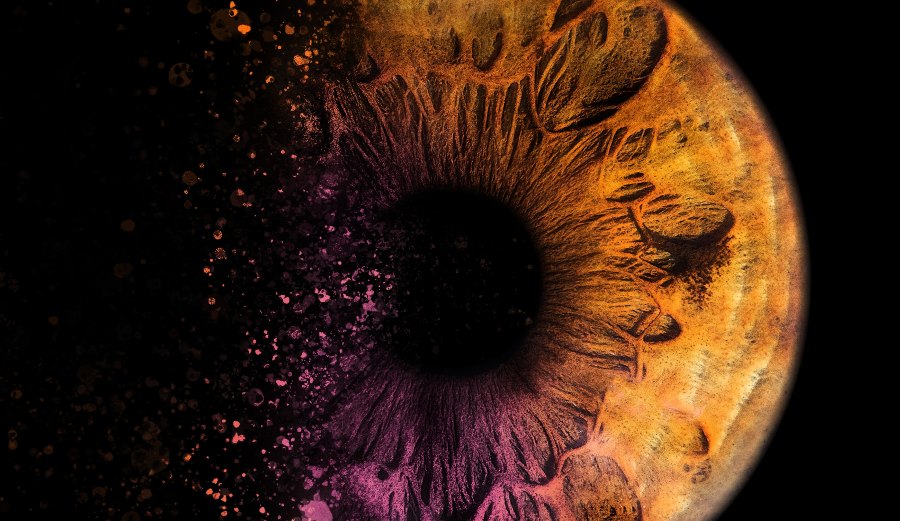Law enforcement effectiveness with iris recognition


James Thorpe
Share this content
ISJ hears from Tim Meyerhoff, Director, Product Management & Market Development, Iris ID.
This integration of advanced technology into law enforcement practices has evolved over the years, marking a shift towards accurate and efficient identification methods.
The early 1900’s saw the introduction of fingerprint biometric identification classifications and the Bertillon system, which was a first-of-its-kind technique.
This system tracked and identified criminal suspects based on photographs and physical measurements with the hope that it would help police identify new and repeat criminals to apply appropriate jail sentences.
While groundbreaking, this faced challenges due to its reliance on height measurements that could be shared among individuals.
Inaccuracies aside, these early systems started a transformation that encouraged the use of science and technology to aid in more precise investigation and identification methods.
These systems led to more complex inventions such as Computer Aided Dispatch (CAD), the National Crime Information Center (NCIC), the Automated Fingerprint Identification System (AFIS) and, eventually, the FBI’s Next Generation Identification (NGI) system including the fully operational Iris Service.
Implemented in September of 2020, the FBI’s NGI Iris Service marked a significant milestone in law enforcement technology.
This cutting edge system was designed to enrol, catalogue and rapidly compare iris images with an accuracy rate of up to 99%.
What began in 2013 with US Border Patrol as a pilot program has grown into a powerful repository of over three million sets of iris images to date, providing law enforcement agencies with a potent means to enhance effectiveness.
According to the FBI Iris Service Team, seven states are in compliance actively using a state or regional identification ABIS supporting type 17 records.
In 2024, 17 more states are expected to receive compliance and by 2025 an additional 25 will be compliant.
Why irises?
From a technology perspective, iris recognition technology delivers distinct advantages, with numerous applications at law enforcement agencies and corrections facilities.
For starters, iris recognition can be used on the vast majority of the population, as most individuals have at least one eye.
Blind individuals have even used iris recognition successfully, as the technology is iris pattern-dependent, not sight dependent.
Additionally, iris technology and facial recognition is useful when collecting all ten prints is not possible.
An iris face fusion modality can serve as a backup to one another as iris can be used for positive identification.
Face is primarily used for investigative purposes and requires corroboration of other facts.
Additionally, an individual’s iris pattern and structure is stable from about one year of age and remains constant over time barring any significant damage to the iris.
Once an individual is enrolled, re-enrolment requirements are not necessary.
With other biometrics, changes in voice, weight, hairstyle, finger or hand size, cuts or even the effect of labour can trigger the need for re-enrolment.
Unlike other methods of physical or biometric identification, iris recognition technology is non-invasive.
There is no need for detained individuals or handlers to physically come into contact with any touchscreens, paper or ink pads or platen; the fingerprint capture surface used during a flat and roll technique.
This eliminates the challenges related to mutilated and worn fingertips that often hamper investigations as well as the accidental release of criminals who are not identified correctly.
It is the accuracy of iris recognition that truly highlights its effectiveness. An iris template is formed using over 240 degrees of unique characteristics.
This is about five times as many as is used in fingerprinting.
And, with each iris being absolutely unique to each individual, the estimated chance of encountering two identical irises is one in 1078 – this includes the chance of identical twins having an iris match.
This level of accuracy is key to supporting high security operations, fewer false accepts and virtually zero opportunity for bias.
Iris recognition technology is also incredibly fast, increasing throughput and confidence for booking and identification processes. Iris technology is the best biometric designed to deliver 1:N searching of large databases without loss of speed.
This means that scanned data is matched against all of the other data on the device or in the database. Enrolment and authentication of an individual also takes less than two seconds.
In addition to the security benefits associated with the speed, ease and accuracy, iris recognition technology as well as iris face fusion solutions can also help reduce overhead costs.
Iris templates only use 512-bytes of storage per iris, so large databases can quickly be searched with only a small amount of computing power.
The need for traditional ten fingerprint enrolments will continue to be the foundation for criminal justice applications.
Dual modality solutions offer an added layer of convenience where users can select the modality they are most comfortable using.
Global applications
Thinking on the overall time scale, the FBI is only recently embracing iris technology as a “Positive Identifier”, as is the case with fingerprint and DNA.
Many other law enforcement agencies across the globe have been utilising iris recognition solutions since the early 2000’s to help improve operations and reduce costs.
Using iris identification data provided either in the field or during intake, agencies can now quickly access an individual’s complete criminal history across state and federal criminal databases and view linked records including mugshots, RAP sheets and other NCIC data.
New developments in iris technology also enable mobile capabilities ideal for enrolling and screening individuals at borders, using small, contactless cameras in the field.
Iris recognition helps mitigate delays for individuals with damaged, worn or mutilated fingerprints looking to conceal their criminal history.
This allows border agents to create a more accurate biometric record of those crossing a border and quickly identify individuals that have been encountered before attempting illegal entry.
In addition to its field-based applications, iris recognition can be used internally by law enforcement agencies to improve a number of processes relating to physical security, workforce management and intake and release.
For example, using irises as a mode of biometric authentication can limit access to sensitive locations under an agency’s jurisdiction.
Iris recognition also guarantees that the correct inmate is being transferred from facility to facility or being released and received.
When used for time and attendance, iris recognition eliminates potential errors associated with manually calculating employee hours.
Since irises are unique and virtually impossible to copy, time and attendance readers outfitted with iris recognition eliminate costly instances of time fraud.
Law enforcement agencies can also apply such solutions as a means of reducing payroll and administration costs; punch-in and punch-out data is read and recorded at the point of entry, which means that timecards are eliminated, along with any discrepancies between time worked and time reported.
The role of technology in modern policing, public justice and safety is critical for sworn officers to be able to effectively do their jobs.
With the introduction of systems like the NGI Iris Service and DHS Immigration Database, law enforcement agencies are equipped with more accurate, fast and efficient methods for identifying individuals.
This integration signifies a monumental leap from the early 20th century’s rudimentary biometrics to today’s sophisticated and reliable iris recognition technology.

